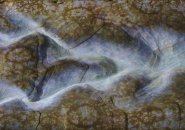
The next hundred years only scrawled Salem’s association with witches more indelibly into the popular consciousness. The world proved to be rather recalcitrant. ² So the monument was shelved, and Salem went on with the laborious task of trying to make the world forget. How can you expect people to forget if there’s a great big stone tower in the way? The whole affair ought to be cast into oblivion as too horrible to contemplate a shame on Salem and our community. This scheme was met with resistance from those who thought such a monument would only perpetuate the association of Salem with witch atrocities. Courtesy of Library of Congress, HABS MA-1315-1. It is to set right the minds of these visitors and to instruct them, and the members of our own community as well, in the lessons to be learned from the history of the delusion of 1692 that the Institute seeks to erect this memorial tower. Annually thousands of persons flock to Salem to stand upon the sites made memorable by the occurrences of the witchcraft epoch. It will never be forgotten for it never can be. Salem witchcraft…has become the most popularly known outbreak of any age or in any land. The belief in witchcraft, and the death-dealing methods by which it was sought to eradicate it, is a part of the history of the world. Their argument for the monument ran thus: Upon climbing to the top, one would be gifted with a scenic view of the surrounding countryside and the ocean. The plan described a rough-faced stone tower, forty-five feet high with a twenty-foot square base and an internal staircase. So at the 200th anniversary of the witch trials, members of the Essex Institute decided, why not embrace it? They suggested a memorial lookout tower on Gallows Hill.

Yet somehow, despite the lack of any central monument to the event, that scab on Salem’s memory refused to heal and disappear.

Some people actually seem to have believed that if Salem toiled hard enough, the witch trials would be forgotten.

Campaigns emphasizing its maritime past, its lovely coast and its collection of Asian export art have all jostled for visitors’ attention, with not one word included about 1692.


 0 kommentar(er)
0 kommentar(er)
